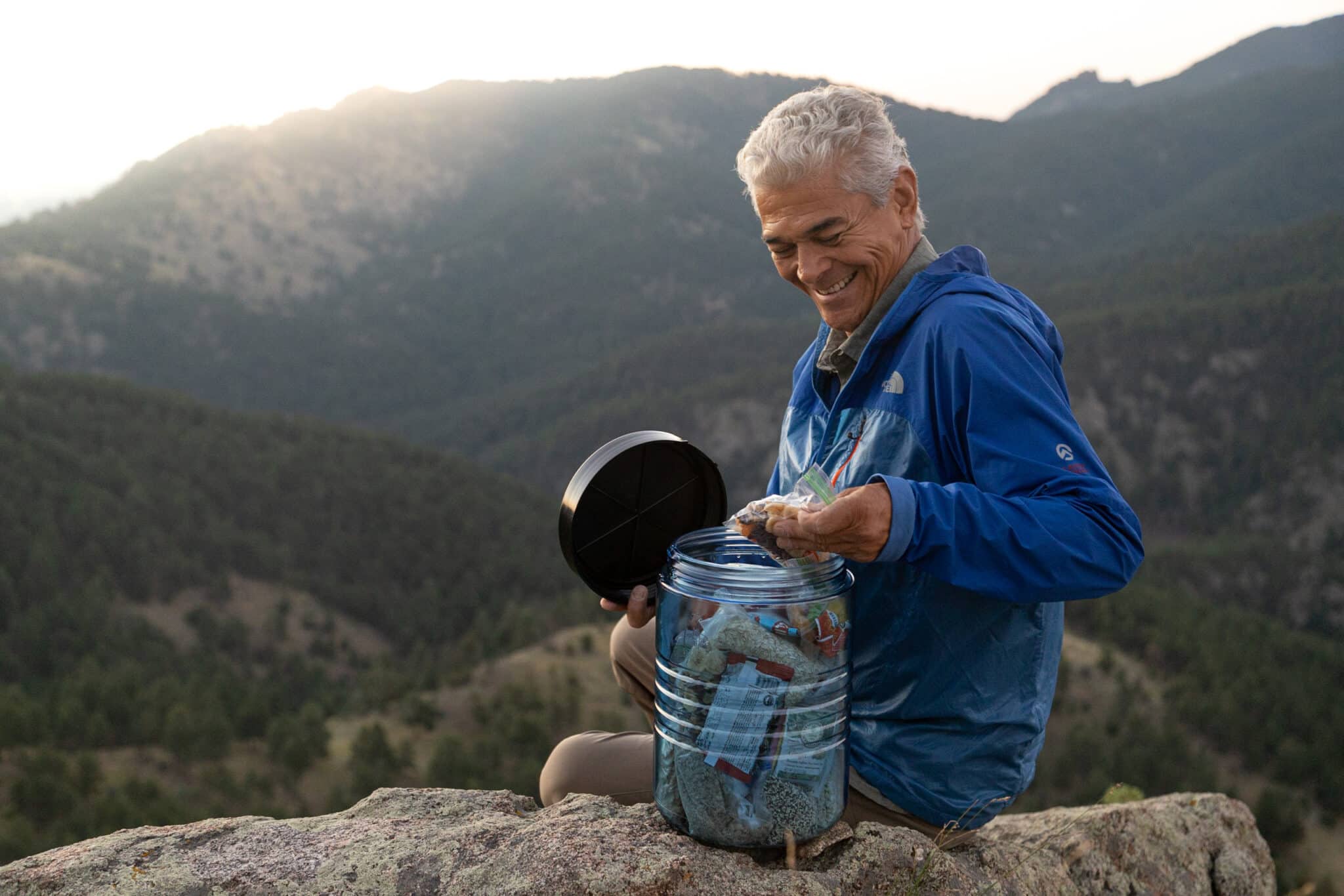
Lightweight Bear Canisters
- Jessica Cockroft

Can a Lightweight Bear Canister Change Your Life?
Wouldn’t it be the absolute WORST if you had to choose between extra protection and your favorite trail food? When you’re stuffing everything you need to live into a pack, you may be inclined to forego important gear in order to lighten your load. Finding a great lightweight bear canister can help eliminate that temptation.
Let’s take a look at your options together. We’ll compare a few models and then answer some other weight-related questions.

With the right canister, you won’t have to risk losing your food to a hungry bear AND you can keep your pack at a reasonable weight. I’m confident we’ll find the perfect balance between weight and reliability.
But first…
What Makes A Bear Canister A GOOD Bear Canister?
A good bear canister will keep your food 100% safe, even if a bear finds it and tries to get in. Not just any old canister will do that. You wouldn’t stash tomorrow’s breakfast in an empty coffee can and call it good, would you?
One easy way to find out if a bear canister is going to be worth its salt is to check the Interagency Grizzly Bear Committee’s list of approved products. The IGBC puts these products through rigorous testing before granting their seal of approval. How? By smearing enticing food inside, closing them according to the manufacturer’s directions, and leaving them unattended in a pen of grizzlies!
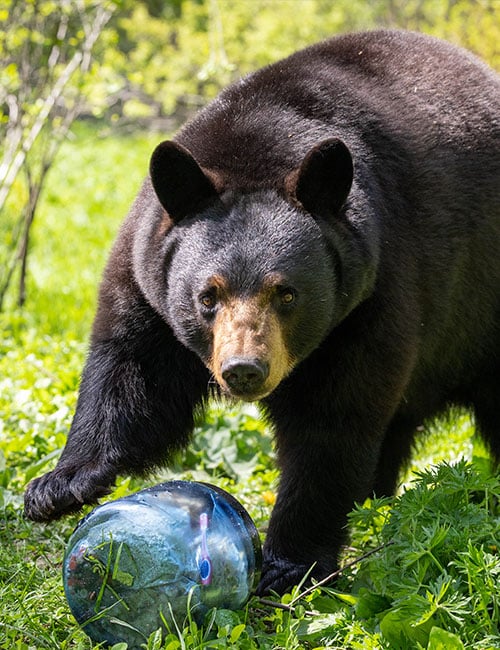
Why Is Bear Proof Food Storage Important?
Bearproof food storage, when used properly, protects you from becoming a statistic on the evening news. It also protects future hikers and campers by preventing bears from getting used to finding food with humans.
If a bear finds unprotected food in established or backcountry campsites, associating both the location and the accompanying smells with easy calories is a natural response. It can quickly establish a habit of revisiting the same spots, causing problems and eventually necessitating its own “removal.” Food habituation in bears is a serious concern that every outdoorist must take steps to mitigate.
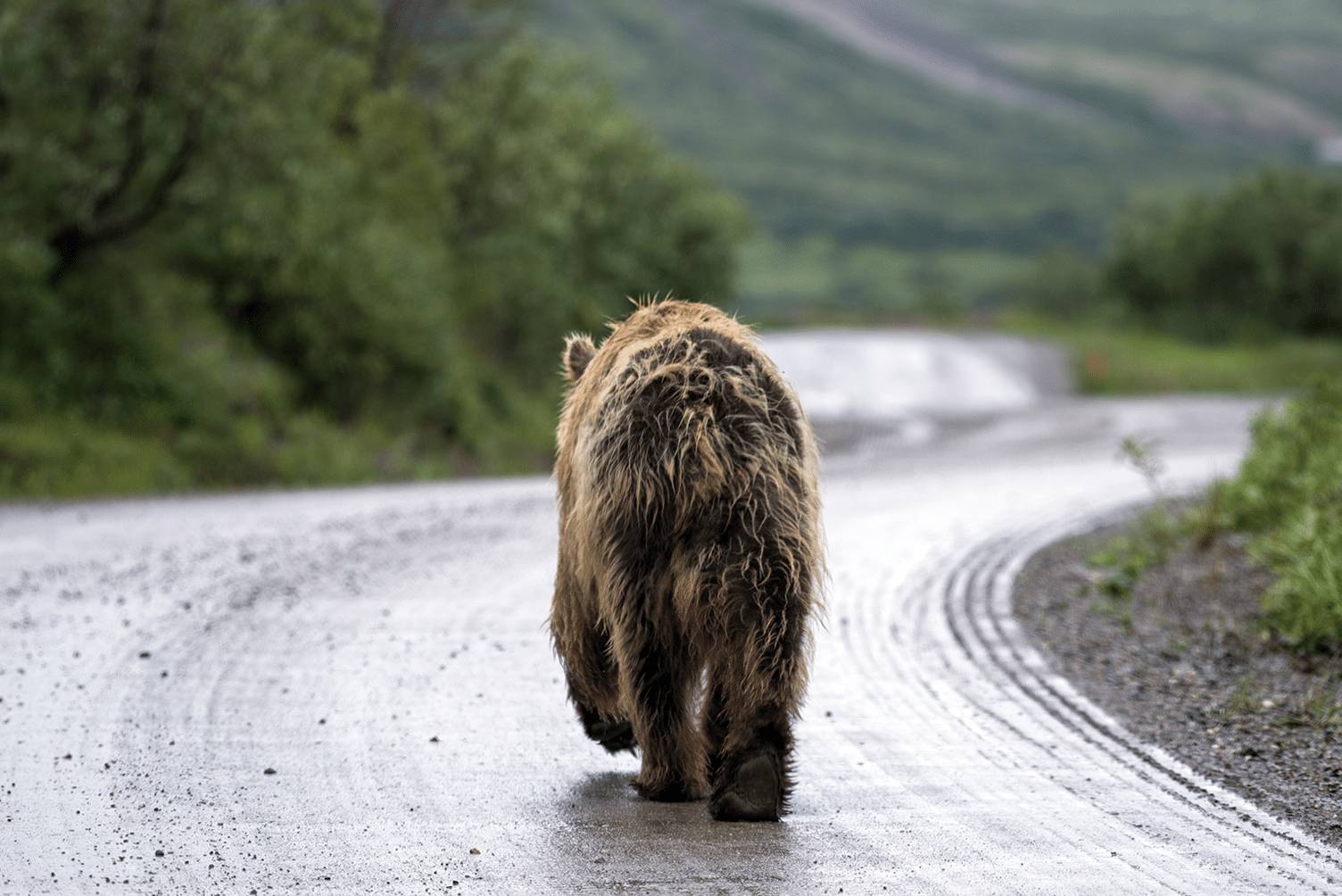
Now that we’ve laid that foundation, let’s do a side-by-side comparison of a few leading bear canisters marketed as being lightweight and bear-proof!
Lightest Bear Canisters on the Market
You have several options if you’re just shopping for bear canisters. The list gets shorter when you want to keep your weight to a minimum! Here are a few to consider, along with the specifications that could make it easier to choose.
Weight – 1 lb 12 oz (28 oz)
Capacity – 5 L (1.3 gal)
IGBC Approval – Yes
Tools Needed – None
Transparency – Clear walls for ease of finding your favorite meal
Stability – Can be used for camp stool – Won’t easily tip and roll away on its own
Packability – Ridges on the exterior make it easy to strap to the outside of your pack, or it sits nicely flat against the bottom
of your pack
Cost – $76.95
The BV425-Sprint is the smallest bear canister available from BearVault, often used by solo backpackers for multi-day trips. Like all BearVault canisters, it offers transparent polycarbonate walls and a lid that doesn’t require tools to lock. It won’t break the bank and is backed by the brand’s limited lifetime guarantee. The IGBC granted it full approval after it passed the grizzly bear test period.
Bearikade Scout
Weight – 1 lb 12 oz (28 oz)
Capacity – 8.19 L (2.16 gal)
IGBC Approval – No
Tools Needed – Yes – quarter or screwdriver
Transparency – Solid black walls
Stability – Can be used for camp stool
Packability – Narrow to ride in the middle of your pack
Cost – $359
Bare Boxer
Weight – 1 lb 9.6 oz (25.6 oz)
Capacity – 4.5 liters
IGBC Approval – Yes
Tools Needed – Yes – Quarter or screwdriver
Opaqueness – Solid black walls
Stability – Small in every direction, can easily roll away
Packability – Small in every direction, can easily pack away
Cost – $80
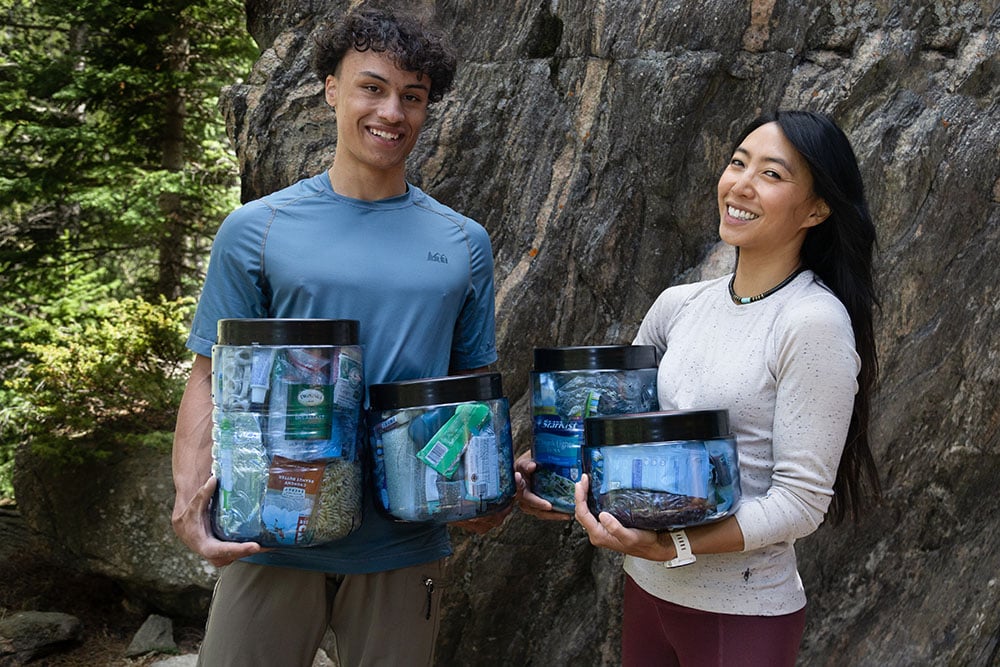
Lightweight Bear Canister vs Bear Bag
Of course, if you’re trying to minimize weight, I have to assume you’ve thought about a bear bag. With one brand weighing in at a mere 7.6 oz, you’d be crazy not to ask about it. They’re the ultimate featherweight!
The biggest issue you need to be aware of is that many bear bags available on the market don’t even make any bear-proof claims. They’re just pouches with some sort of closure sold alongside some rope and a carabiner. You could toss your food into a trash bag and call it a bear bag. And, as long as a bear doesn’t manage to reach it, it would be fine.
Unfortunately, many bears have gotten pretty good at figuring out bear hangs. That’s why some trails and parks have decided to disallow them and require a canister instead.
But, unless you’re going somewhere like that, your choice will come down to your priorities. Do you care if your food gets smashed, either in transit or during a bear event? Will it bug you, having to find a suitable tree after your evening meal?
Here’s a quick compare and contrast between the two options.
Bear Canister
Pros
- Not dependent on trees or hangs
- No set-up
- Is required in some parks
- Protects food from crushing, even if bears get to it
- Some offer transparent walls to see contents
- Some can double as a camp stool
Cons
- Bulky in a pack
- Heavier than a bag
Bear Bag
Pros
- Soft sides make squishing into full packs possible
- Lighter than canisters
- Low cost, especially when not bear-proof
Cons
- Most on the market are not IGBC-approved
- Requires tree or established hang pole
- Contents can be crushed by a bear or in transit
- Most can be torn into, teaching bears to target more hangs in the future
Compared to a bear bag, a bear canister ticks a lot more boxes and is simpler to use. But if a bag fits your needs better, make sure you know how to hang it properly when you reach your campsite.

What Can You Fit in BearVault’s Lightest Canister?
One of the great things about the lightest bear canister from BearVault is its capacity. The polycarbonate used in manufacturing enables stronger & thinner walls, maximizing the interior space. You get 1.3 gallons for just 1 pound and 12 ounces!
This video review gives a packing list that allows for 4 full days on the trail. She does this by focusing on compact snacks and depending on bear deterrents like noise and spray to keep her first day’s supplies safe in her pack. Since those will be eaten before her first night, she can extend her trip an extra day.
Sample Packing List
- 3 Granola Bars
- 3 Packets of Poptarts
- 7 Honey Stinger Waffles
- 1 Packet of Instant Coffee
- 9 Cliff Energy Gels
- 9 Mini Cliff Bars
- 2 Sasquatch Fuel Dinners
If you’re the type that likes a hot meal to start your day, focusing on easy-to-compress meals like oatmeal and powdered eggs will go a long way in maximizing your space. It’s also a great idea to take those instant meals out of their original packaging and use something with a lower footprint, like simple sandwich baggies. Of course, that will mean you’ll have a camp pot to clean out after your meal, but you’ll definitely be able to fit more in that way.
Lightweight Bear Canisters are the Bomb
The point is that adding a lightweight bear canister to your gear library can give you that little extra fuel to pack in the miles. Every ounce counts when you’re living out of your bag. Keeping it as light as safely possible is a worthy pursuit. The right canister is a great way to ensure you hit mile goals and stay energized on the trail!
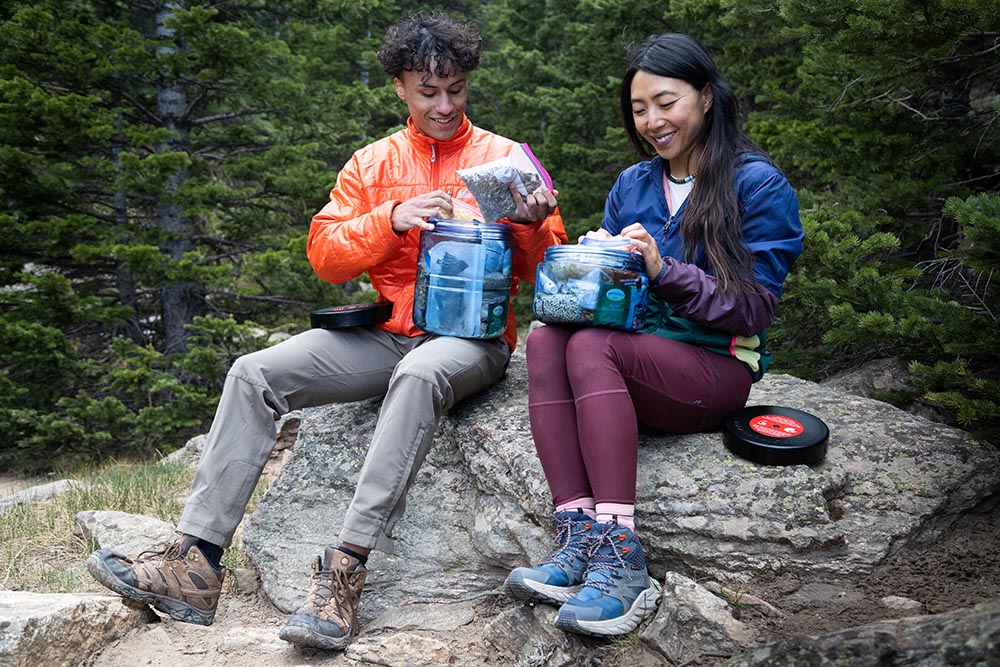
Author Profile

Jessica Cockroft
Jess merges her passion for words and an insatiable longing for adventure as an outdoor freelance content writer and marketer. When she’s not busy stringing words together you’ll probably find her planning another camping trip for her crew of kids or taking care of the homestead. You can find her on LinkedIn and Instagram, as well as on her own website.


